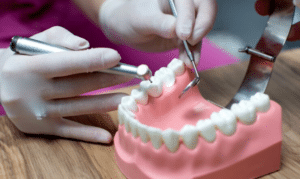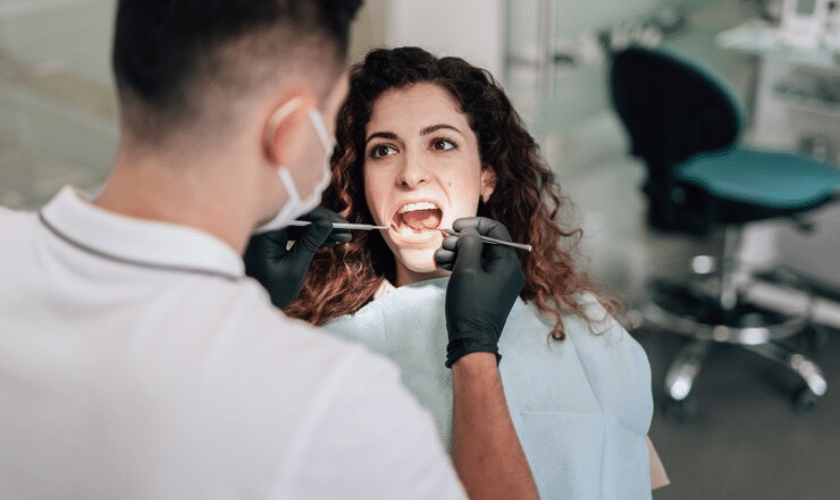Embarking on a journey to optimal oral health involves navigating choices, especially when it comes to dental fillings. The traditional use of mercury has spurred a quest for safer alternatives, ushering in a new era in dentistry. In this exploration, we unravel the world of mercury-free alternatives, shedding light on options that not only prioritize dental well-being but also align with evolving standards of safety and efficacy. Join us as we delve into the alternative filling materials steering dentistry toward a safer and more patient-centric future.
Decoding The Significance of Dental Filling Materials
The choice of materials in dental fillings plays a pivotal role in not only restoring teeth but also ensuring the long-term health and well-being of individuals. Traditionally, mercury has been a common component in dental amalgam fillings, known for its durability and affordability. However, the potential health risks associated with mercury have led to a surge in the exploration of alternative materials.
Mercury, when used in dental amalgam, raises concerns due to its toxicity and the potential release of vapor over time. This has spurred the development and adoption of mercury-free alternatives, such as composite resin, glass ionomer, porcelain, and gold. These materials not only provide effective restoration but also cater to the increasing demand for biocompatible filling options.
The significance of materials in dental fillings lies in striking a delicate balance between functionality, safety, and patient preferences. As dentistry evolves, the emphasis on materials reflects a commitment to advancing oral health while addressing concerns associated with traditional options, thereby ensuring that dental care remains a cornerstone of overall well-being.
Composite Resin: Aesthetics and Endurance in Harmony
Composite resin emerges as a beacon in modern dentistry, offering a compelling alternative to mercury-laden fillings. Crafted from a mixture of plastic and finely ground glass particles, composite resin not only mimics the natural color of teeth but forms a secure bond, providing durability and resistance to fractures. Unlike traditional mercury fillings, composite resin eliminates the potential health concerns associated with mercury exposure.
Beyond aesthetics, the material composition of composite resin addresses environmental and biocompatibility concerns. However, it’s essential to note that some composite resins may contain bisphenol-A (BPA) derivatives, raising questions about potential health impacts. To address this, ongoing research is dedicated to developing BPA-free alternatives, ensuring patients can confidently choose a mercury-free option that aligns with both their aesthetic preferences and health considerations.
As the dental landscape evolves, composite resin stands as a testament to dentistry’s commitment to providing safe, durable, and visually appealing solutions for patients seeking harmony between aesthetics and endurance in their oral health journey.

Glass Ionomer: Functionality with Fluoride Benefits
Glass ionomer, a notable mercury-free alternative in dental fillings, is gaining recognition for its unique combination of functionality and preventive care. Composed of a blend of acrylic and fine glass powders, glass ionomer fillings not only provide a functional solution for non-load-bearing areas but also release fluoride over time.
This continuous fluoride release contributes to the prevention of tooth decay, making glass ionomer a compelling option for individuals seeking dental materials that actively support oral health. While it may not match the durability of composite resin or porcelain, the fluoride benefits and its ability to bond with natural tooth structure make glass ionomer a practical choice, particularly for areas where aesthetic concerns take a back seat to functionality and preventive care.
If you are considering glass ionomer fillings, get your dentist’s opinion to evaluate the suitability of this material. The evaluation should be based on individual oral health needs, emphasizing the importance of a holistic approach to both immediate and long-term dental well-being.
Porcelain: The Aesthetic Marvel with Durability
Porcelain, often associated with aesthetics and longevity, stands out as a mercury-free alternative to traditional fillings. Inlay and onlay porcelain fillings are custom-crafted in dental laboratories to mimic the natural appearance of teeth seamlessly. Beyond their visual appeal, porcelain fillings offer impressive durability and resistance to staining.
Delving further into the manufacturing process, porcelain fillings involve precise impressions and a meticulous bonding process. While this ensures a high degree of customization and strength, it also extends the treatment timeline. If you are opting for porcelain fillings, make sure your dentist schedules multiple appointments to achieve the desired outcome.
“Gold and ceramics are the main standard material used for indirect restorations, and until the
late seventies amalgam was used for direct restorations.”
-Lohbauer, U. (2009). Dental glass ionomer cements as permanent filling materials?—Properties, limitations, future trends. Materials, 3(1), 76-96.
Gold: The Time-Tested Reliability
Amidst the array of dental filling varieties, gold stands as a beacon of time-tested reliability. Unlike mercury-containing amalgam fillings, this material is biocompatible and boasts a track record of minimal wear on opposing teeth. The absence of mercury addresses concerns related to toxicity, offering a safer option for those wary of potential health implications. Gold fillings, meticulously crafted and customized, endure for years, providing longevity unmatched by some counterparts.
In terms of functionality, gold fillings excel in durability and strength, making them particularly suitable for load-bearing areas. However, the conspicuous contrast with natural tooth color prompts considerations regarding aesthetics. Engaging in a comprehensive discussion with your dentist is crucial, weighing the benefits of gold’s reliability against the desire for a more discreet appearance. As the pursuit of mercury-free dentistry evolves, gold remains a steadfast choice, embodying a legacy of resilience, biocompatibility, and enduring dental wellness.
The quest for alternatives to mercury in dental fillings has ushered in a new era where safety and effectiveness coexist seamlessly. From composite resin’s aesthetic allure to glass ionomer’s fluoride-releasing benefits, porcelain’s durability, and gold’s time-tested reliability, patients now have a spectrum of choices tailored to their unique needs.
It’s paramount for you to engage in open dialogues with your dentist, thoroughly exploring the characteristics and considerations associated with each alternative. Dentistry’s continuous evolution ensures that the choices available align with contemporary standards of safety, efficacy, and patient satisfaction. By navigating the diverse landscape of mercury-free alternatives for dental fillings, you can confidently embrace a future where oral health and overall well-being thrive without compromise. Do your research or consult a dentist to recommend the best option for dental fillings. Think thoroughly about your filling materials before considering this treatment in your next dental appointment.



